

Max Davies
2026 Toyota HiAce review
49 Minutes Ago
The Range Rover Sport is a modern icon of luxury motoring, but has the third generation managed to stay ahead of its German rivals?
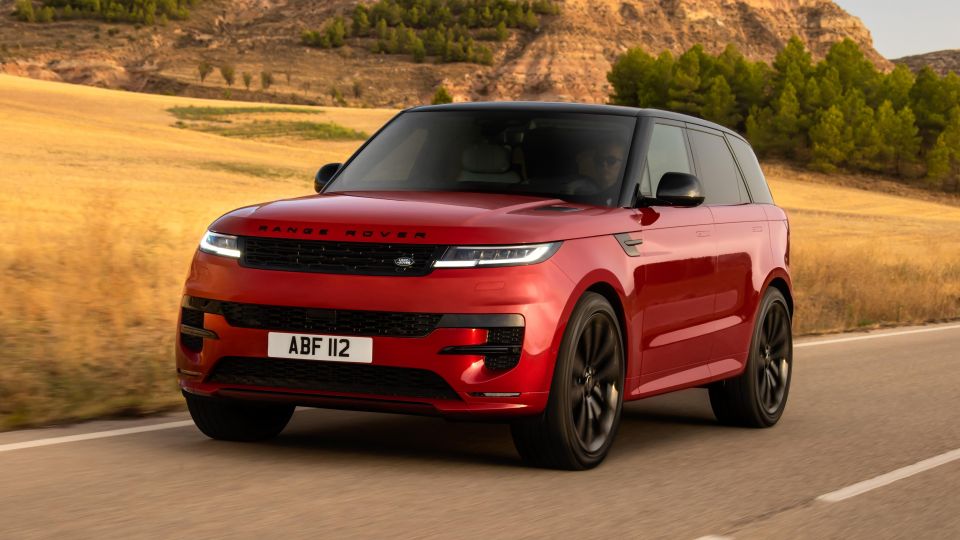


Quickly see how this car stacks up against its competition. Select any benchmark to see more details.
Where expert car reviews meet expert car buying – CarExpert gives you trusted advice, personalised service and real savings on your next new car.
The Range Rover Sport is a modern icon of luxury motoring. Much like its larger brother, driving a Range Rover is a bit different to driving a BMW, Audi, or even Mercedes-Benz SUV.
It’s not necessarily better or worse, but a Range Rover is a Range Rover, and in many ways, like Porsche, the Indian-owned British brand has managed to maintain its allure and prestige by not producing many cheaper vehicles sporting the same badge, something that can’t be said about its German rivals.
This conscious decision to keep Range Rover premium has paid dividends with the allure and prestige of Land Rover’s premium brand remaining at an all-time high. After all, a Range Rover on the road is a status symbol that’s the envy of many.
The question is whether a Sport is a real Range Rover. The full-sized model we reviewed recently remains the pinnacle of luxury SUV motoring, rivalling the Bentley Bentayga or Rolls-Royce Cullinan, while the Sport is for those who perhaps don’t need such a large SUV with seven seats, and want something with a bit more dynamic prowess and capability.

The new-generation Range Rover Sport is built on the same platform as the big daddy and shares plenty of parts, technology, engines, and design characteristics. In other words, the Range Rover Sport is genuinely a slightly smaller version of the full-sized car at a massive discount.
The Range Rover Sport actually looks like a great deal – with prices starting at $139,160 – when compared to the full-sized model, but is still a fair bit more expensive than it has ever been. It’s also expensive compared to rivals such as the BMW X5 (from $109,900), Audi Q7 (from $107,523), and Mercedes-Benz GLE (from $114,204).
There is a lot to know about the new Range Rover Sport; from the fact that it offers tried-and-tested diesel and petrol engines, that it’s available with a BMW-sourced twin-turbo 4.4-litre V8, and the fact there’s a new plug-in hybrid that actually makes sense and works exceptionally well. There’s also a pure-electric model coming in 2024.
Australian buyers will have a much easier time getting access to the diesel models of the new Range Rover Sport for the initial launch period of the car given that our market does not have the super strict emission requirements that Range Rover faces in Europe and USA, meaning that models heading down under will be able to utilise slightly older emission systems that are not in short supply.
With that in mind, the most popular Range Rover Sport model is projected to be the D300 given its price point and availability, with an extra $50,000 needed to get into a plug-in hybrid.
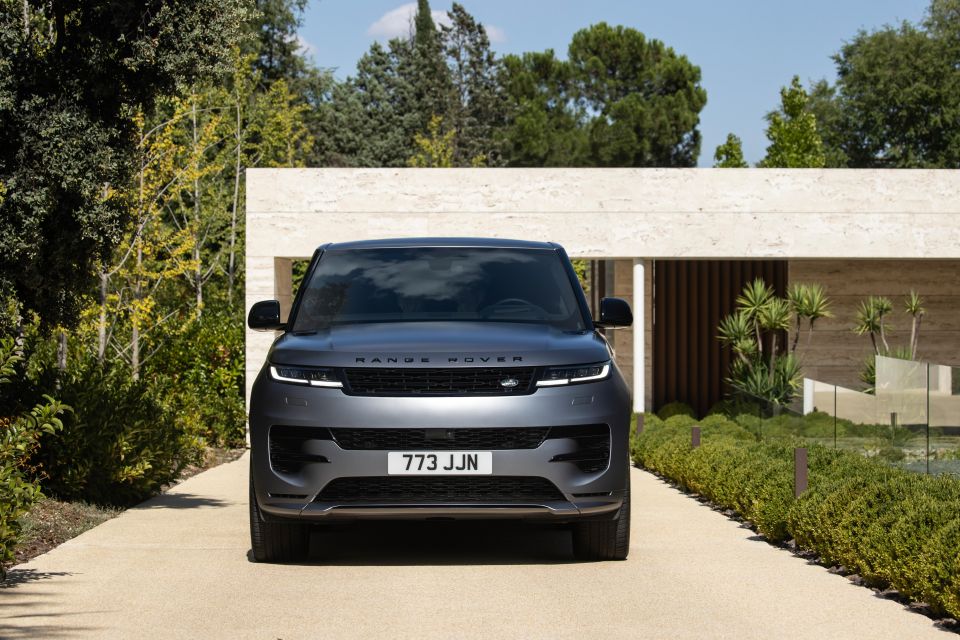
There are 12 variants of the Range Rover Sport available to order in Australia from launch.
The diesels (D badging) will be the quickest to arrive, before the petrol (P badging) and hybrid models (e badging) become more accessible in 2023.
The Range Rover Sport’s price has increased by $25,000-$30,000 compared to the previous model, and that will no doubt make its presence on the road more exclusive.
Given the current climate of low supply and high demand, it’s highly unlikely any discounts are on offer for those looking to be among the first to order a new Sport.

2023 Range Rover Sport pricing:
| Badge | Engine | Price |
|---|---|---|
| SE | D250 | $139,160 |
| SE | P360 | $144,788 |
| DYNAMIC SE | D300 | $151,026 |
| DYNAMIC SE | P400 | $155,608 |
| DYNAMIC HSE | D350 | $168,638 |
| DYNAMIC HSE | P400 | $167,547 |
| DYNAMIC HSE | P530 | $197,809 |
| DYNAMIC HSE | P510e | $198,097 |
| AUTOBIOGRAPHY | D350 | $191,141 |
| AUTOBIOGRAPHY | P530 | $220,312 |
| FIRST EDITION | D350 | $196,359 |
| FIRST EDITION | P530 | $241,021 |

Buy your new car without the stress. It's fast, simple and completely free.

Great service from Travis and team, second time I have used this business would not hesitate to recommend them to anyone
Craig C.
Purchased a Ford Ranger in Sunshine Coast, QLD
CarExpert helped Craig save thousands on his Ford Ranger, now let us save you on your next new car.
Find a dealThe Range Rover Sport offers the best interior package of any SUV in its class. It’s a big statement, but it’s simply true.
We don’t mean in terms of technology alone, because it’s probably not up to the offerings from the German trio when it comes to connected tech – but in terms of fit and finish, material use and cabin ambience, it’s top-notch.
There are also some worthwhile mentions in regards to ergonomics. The steering wheel and pedal positions, and the ability to quickly make all the adjustments required within easy reach, makes driving the Range Rover Sport stress-free.
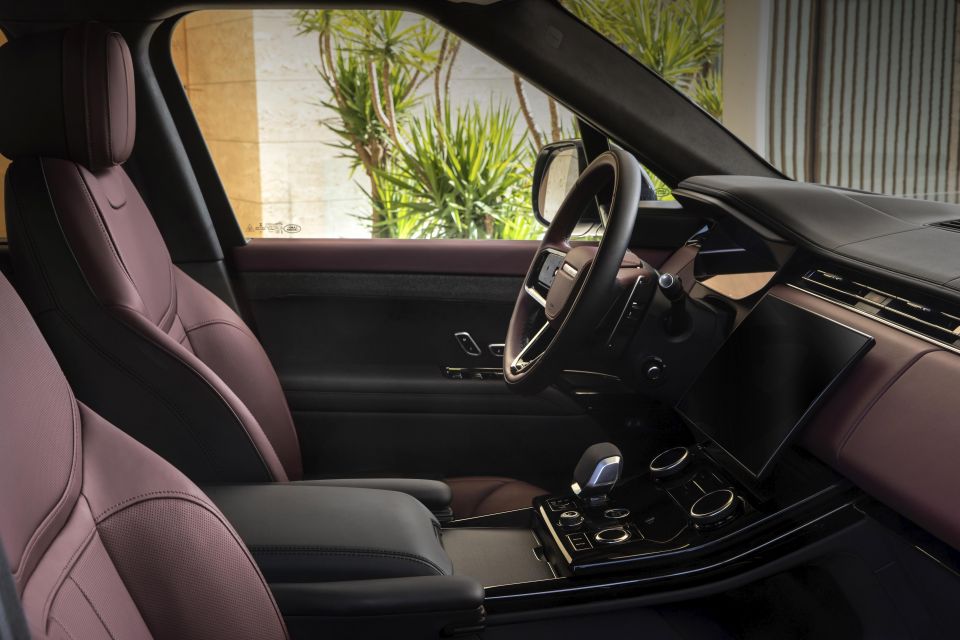
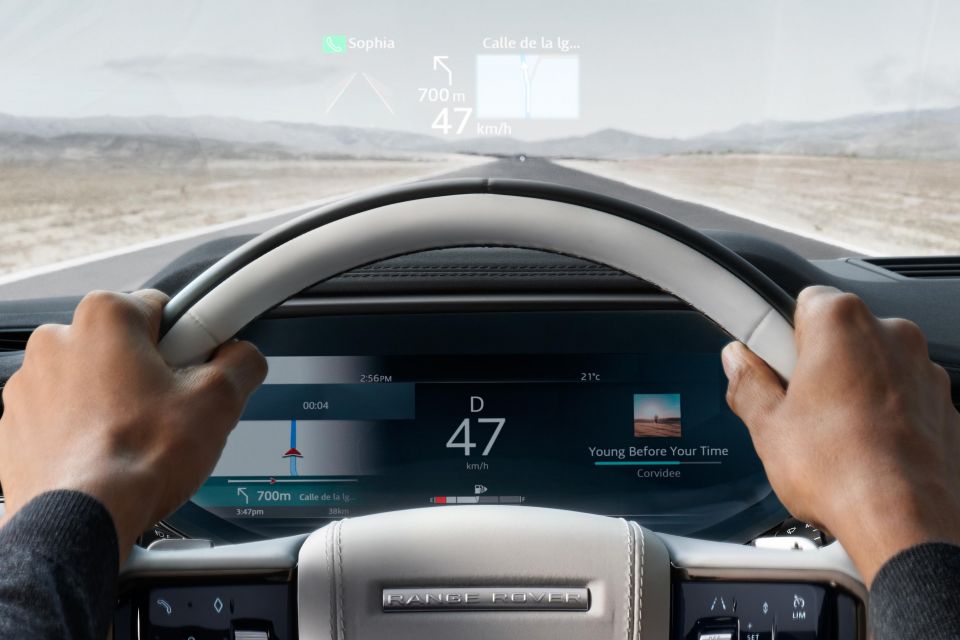
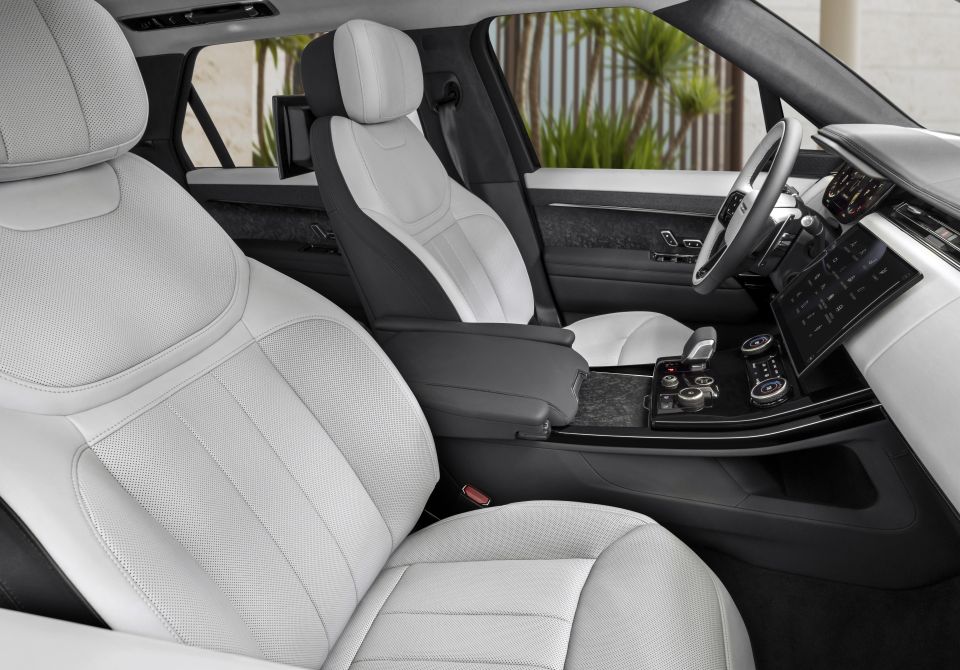
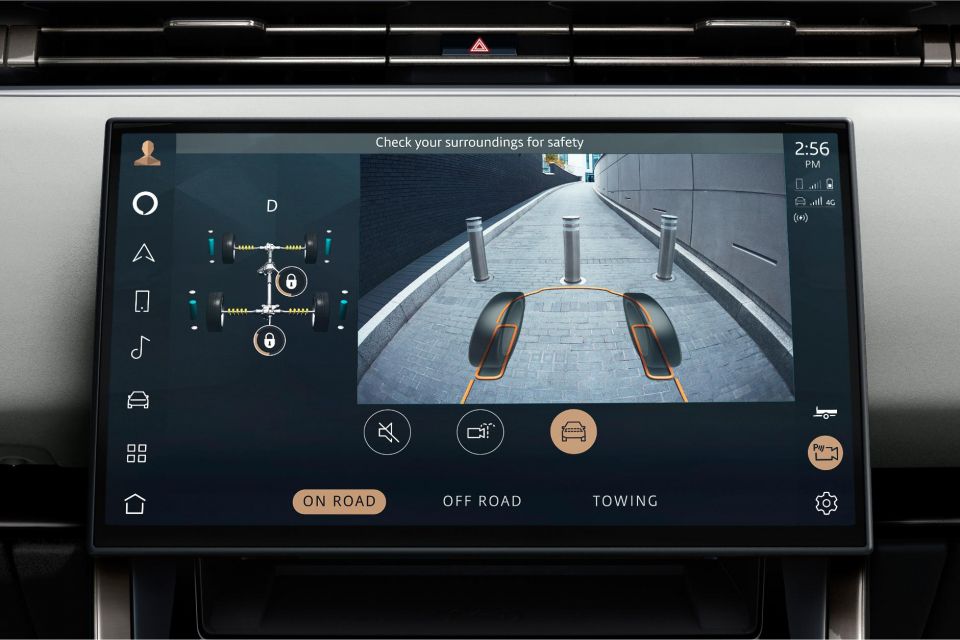
The 13.7-inch digital driver instrument cluster display comes standard across the range and has a really nice, high-resolution display as well as a distinctive shape that gives the cabin a great sense of modernity without taking away the elegance of its design.
We also love the 13.1-inch infotainment touchscreen borrowed from the full-size Range Rover; it’s slightly curved and looks brilliant.
The technology powering it, though, is a bit buggy. It seems to stutter a fair bit when driving through the CBD trying to project the 3D display of buildings around (which is annoying because it’s 2022, and a 10 year-old iPhone could do this), and even navigating out in the country it seems to occasionally stutter with screen flickers and momentary freezes.
We are mindful the cars we drove are very early examples and most of these issues are software, not hardware based.
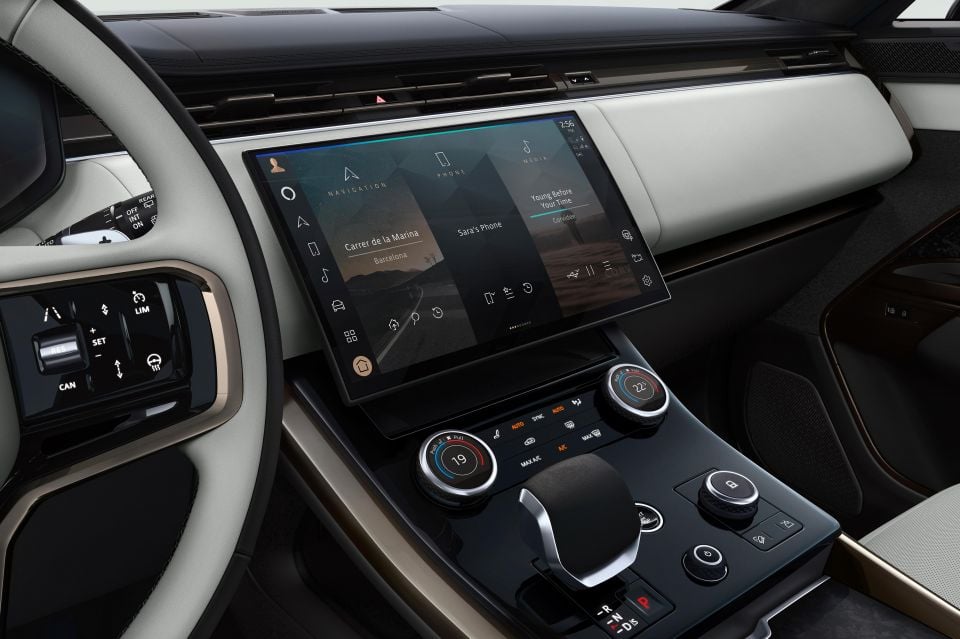
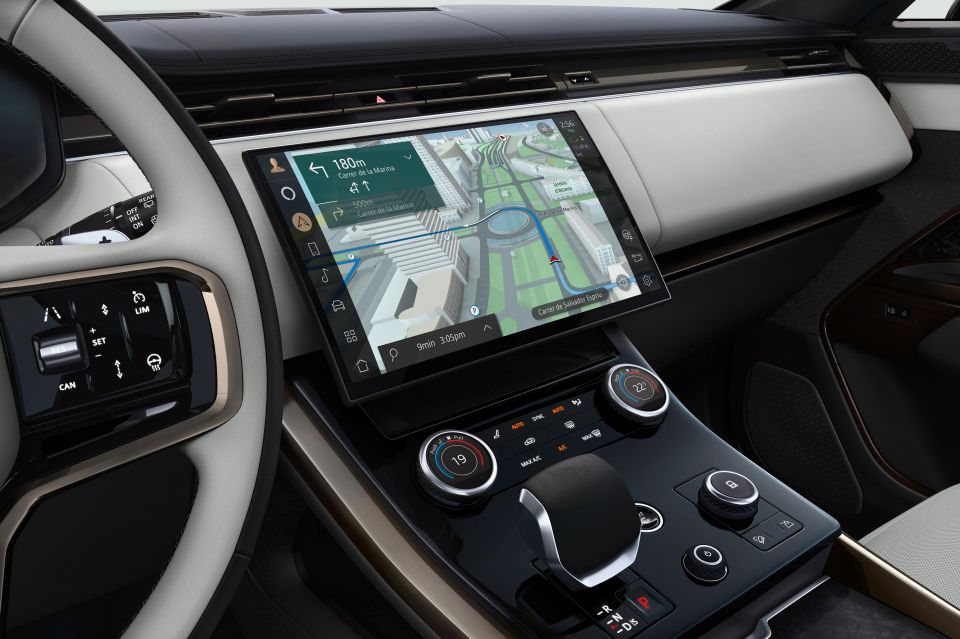
The Range Rover Sport does have wireless Apple CarPlay and Android Auto, so the good news is you don’t have to use buggy British software; you can let the Americans run your screen, and then it seems to be a lot smoother and problem-free.
The other good news? The other thing the British do well is design. The interior of the Range Rover Sport is brilliant. It has no surface that feels poorly thought out or designed.
Everything feels great to touch and the way the surfaces are covered in leather and stitched beautifully is one of the main reasons why getting inside a Range Rover seems to be a treat all on its own.
For us, it’s definitely miles ahead of the Germans when it comes to this aspect.
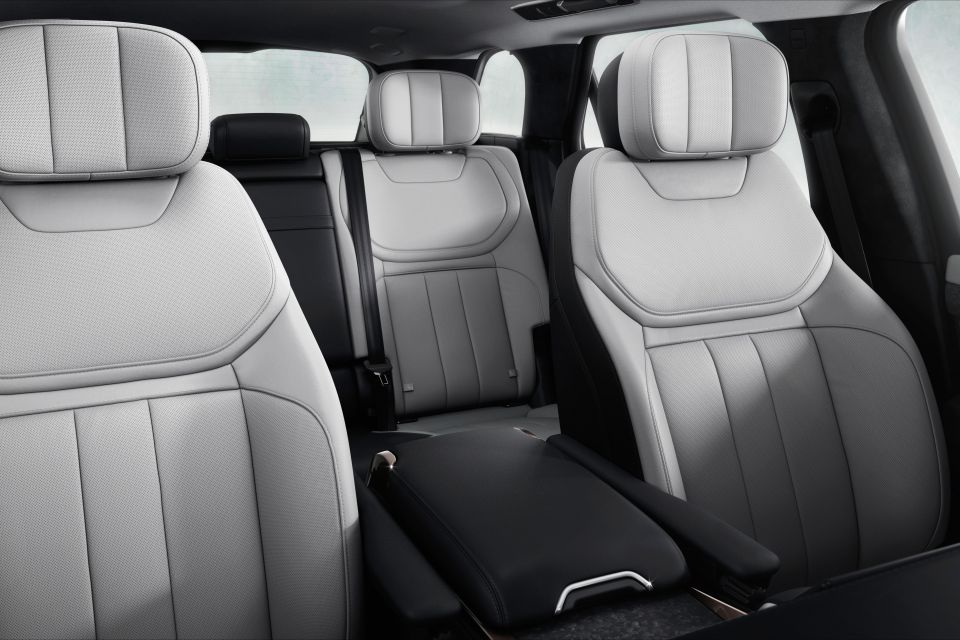
Ride comfort is brilliant, and the front seats do a great job of supporting your back and neck.
This is the best SUV in its segment to do a long road trip in. If you have a holiday home out of town that you visit frequently, this is the car for you.
The back seats are also very spacious, with three average adults able to fit with relative ease, but the car is perfect for four as all can travel in extreme comfort.
There’s 450L of boot space, or 835L if you measure to the roof. This expands to 1860L with the rear seats folded.
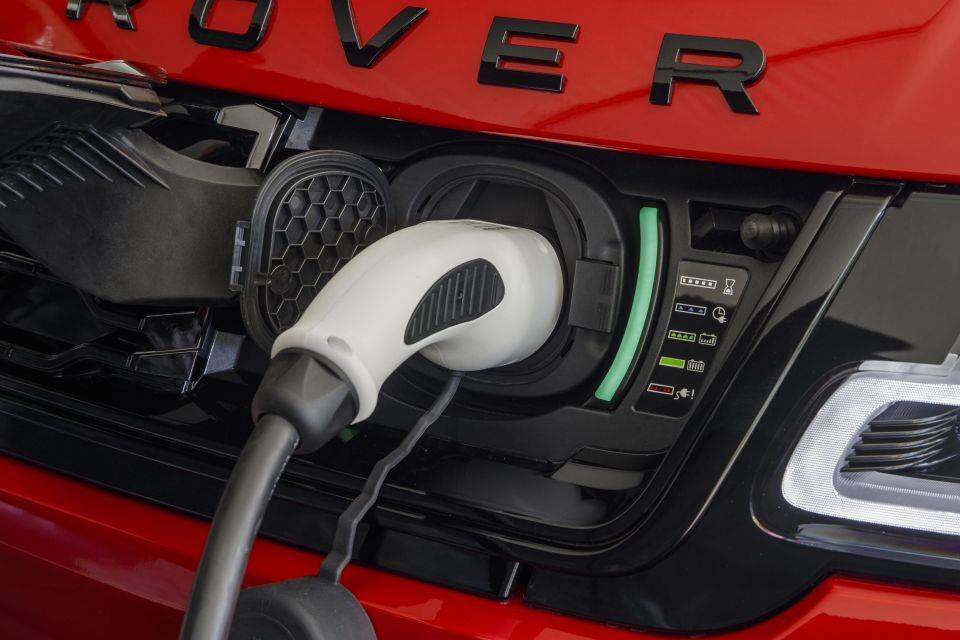
There are three engines available for the Australian market. The 3.0-litre six-cylinder turbo-diesel comes in three variations: D250, D300 and D350.
The 3.0-litre six-cylinder turbo petrol is available in P360 and P400 guises, and is the engine of choice in the plug-in hybrid P510e where it’s paired up with a 105kW electric motor and 38.2kWh battery.
The BMW-sourced 4.4-litre twin-turbo V8 powers P530 variants, and will soon power the SVR variant.
Engine specs:
| Badge | Engine Type | Power (kW) | Torque (Nm) | Fuel Economy L/100km | CO2 Combined (g/km) |
|---|---|---|---|---|---|
| D250 | 3.0-litre i6 turbo-diesel | 183 | 600 | 7.2 | 190 |
| D300 | 3.0-litre i6 turbo-diesel | 221 | 650 | 7.2 | 190 |
| D350 | 3.0-litre i6 turbo-diesel | 258 | 700 | 7.2 | 190 |
| P360 | 3.0-litre i6 turbo-petrol | 265 | 500 | 9.4 | 219 |
| P400 | 3.0-litre i6 turbo-petrol | 294 | 550 | 9.4 | 219 |
| P510e | 3.0-litre i6 petrol PHEV | 294 | 700 | 1.6 | 37 |
| P530 | 4.4-litre twin-turbo petrol V8 | 390 | 750 | 11.8 | 275 |
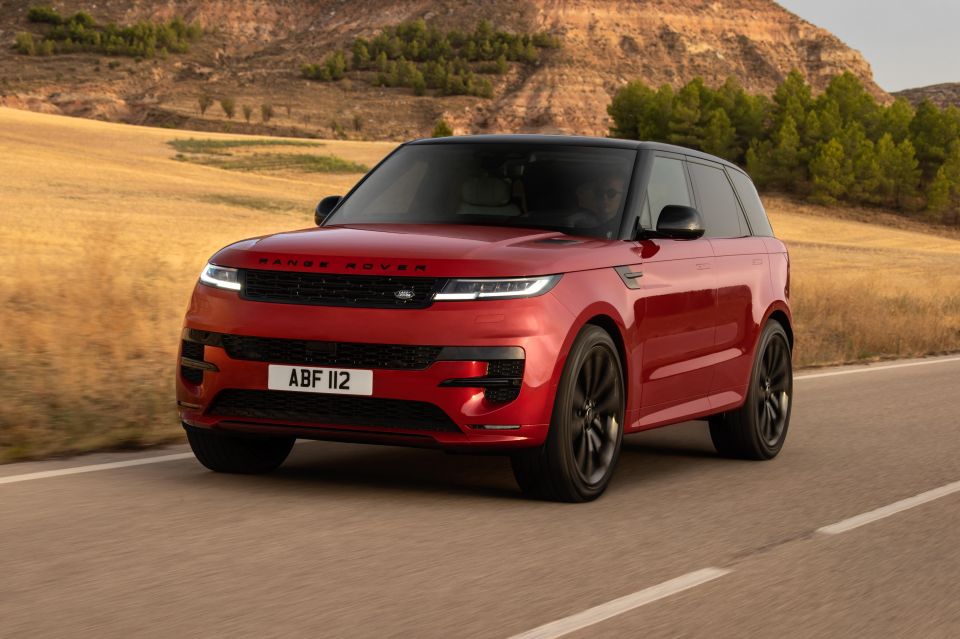
The original Range Rover Sport came into existence in 2004 at the Detroit motor show, with the second generation hitting Australian roads in 2014, followed by a substantial update in 2017.
The point is, it has been a good five years between drinks, and the third-generation model is entering a competitive landscape that now includes the latest Porsche Cayenne and a trio of other German rivals. That’s not to mention the likes of Lexus and Genesis with their own excellent luxury SUVs.
The whole idea of the Range Rover Sport was to provide luxury with dynamic driving characteristics that embody its ‘Sport’ badging. This may have been the case upon its debut but the third generation is more Range Rover than Sport.
By that we mean, a Porsche Cayenne would genuinely run rings around it in terms of dynamism – but it’s also the most luxurious and comfortable Range Rover Sport to date thanks a range of new and unique technologies that even the full-size Range Rover doesn’t get.
For example, the new Sport employs a new dynamic air suspension that has switchable volume air springs with twin-valve active dampers, meaning it can vary the difference between stiff and comfort ride settings by a significant margin using air pressure in two separate chambers – the higher the pressure, the stiffer the ride.
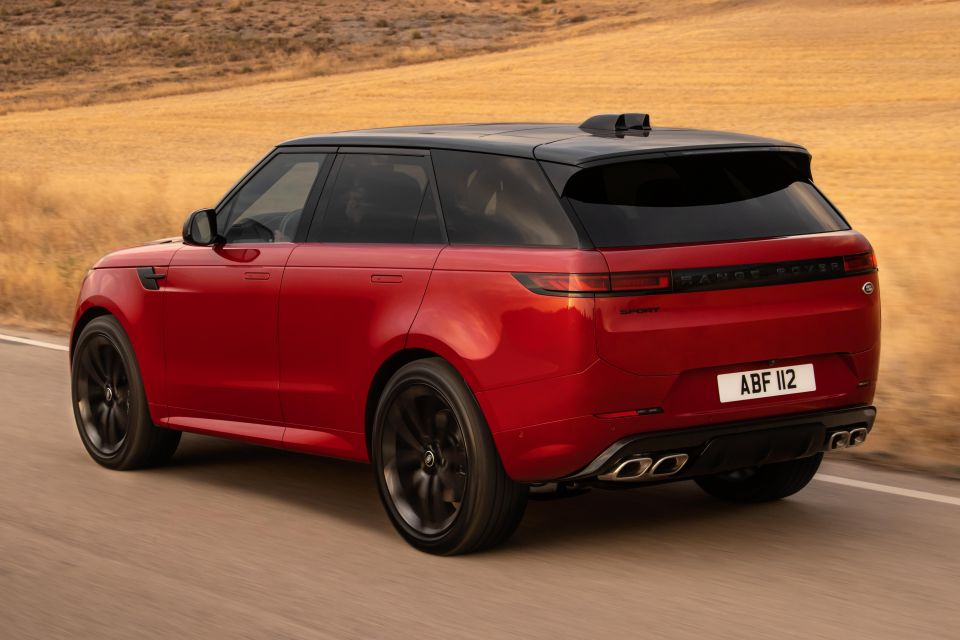
It makes Comfort mode almost as good as a full-sized Range Rover, while stiffening the car up considerably more when required.
The best way to look at it is with a sense of realism. How often are you going to find yourself going flat-chat through a twisty mountain road and wondering why the front end of the Sport feels its weight as you push to the limit around a corner? Or why the steering feels a little underwhelming and lifeless on centre?
Compare that with how often you’re likely to be riding over terrible roads in Sydney, appreciating the fact somehow, despite its 23-inch wheels, the Sport glides over things like Aladdin on his magic carpet.
It’s actually a remarkable feat of engineering that we would happily pick over agility any day of the week.
That’s not to say the Range Rover Sport isn’t sporty. The seating position is a good 20mm lower than the full-sized car and, along with its windscreen which is now more steeply raked, the Sport offers a very different driving position that’s is an improvement over the previous model.
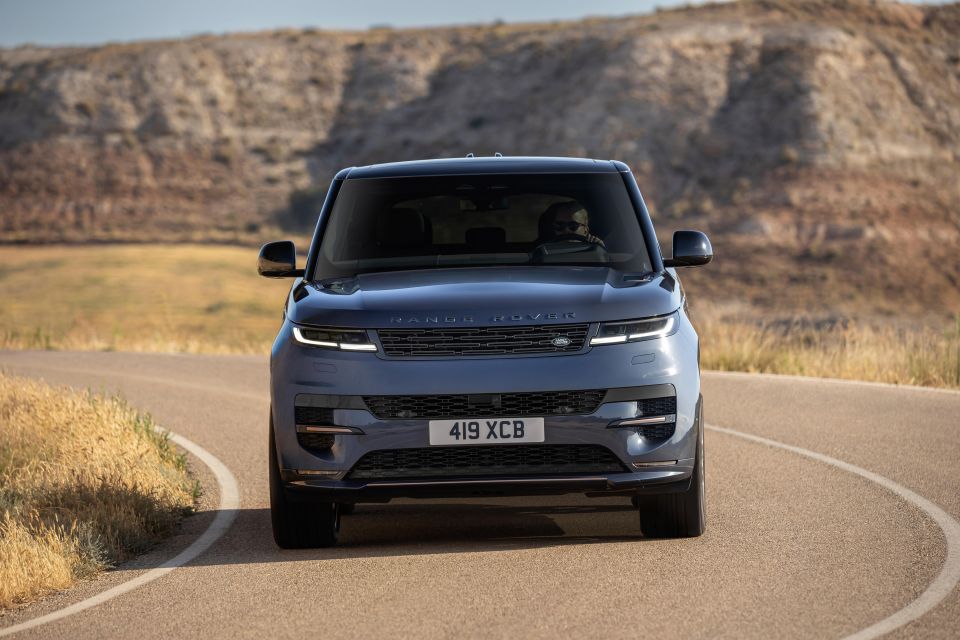
You don’t get the sense you’re sitting on top of traffic and commanding your way around, there’s more of an immersive feel to it without losing that open, airy feel Range Rovers are so renowned for.
There’s also rear-wheel steering, which can change the angle of the rear axle by 7.3 degrees, making the Range Rover Sport feel a lot smaller than it is around tight corners and when parking. It definitely makes living with the Sport a much easier prospect than before.
All of our test cars were fitted with a plethora of features including 48-volt electronic active roll control systems, and all the suspension technology on offer. We will reserve judgement of the car’s true nature without these features for when it arrives in Australia towards the end of 2022.
We drove the D300 diesel, P530 twin-turbo petrol V8, and the P510e plug-in hybrid. It’s safe to say the 3.0-litre six-cylinder turbo diesel in the D300 (221kW/650Nm) is genuinely more than enough for what most buyers would ever do with the car.
The D300 gets from 0-100km/h in 7.3 seconds and we can assure you, both on the move and from the lights, that’s plenty of grunt to not feel slow. It also has no issues overtaking slower cars on the highway whatsoever.
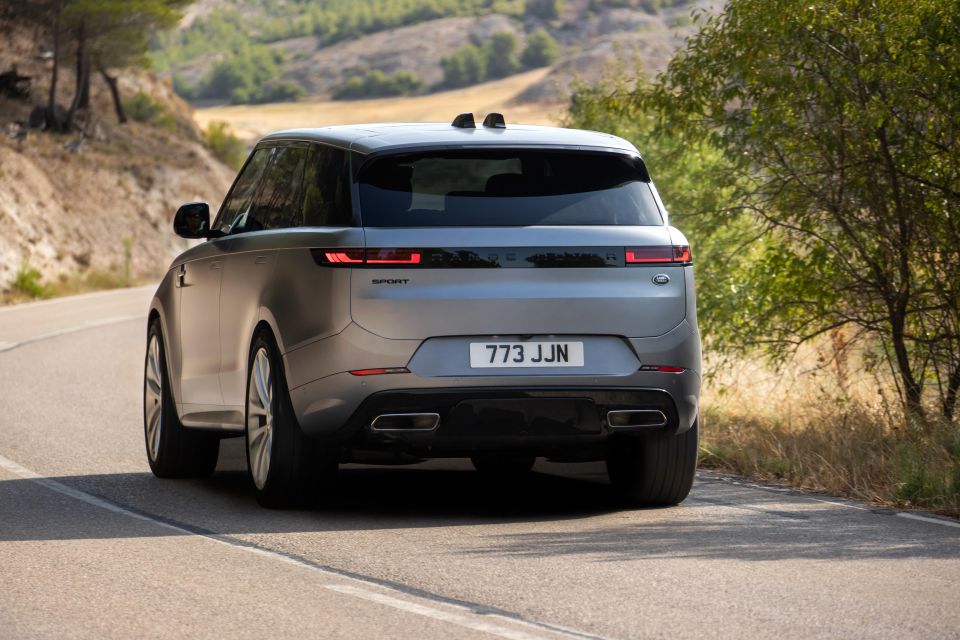
If you don’t care about the fact you’re buying a diesel engine in today’s age of plug-in hybrids and electric vehicles, it’s actually an excellent choice.
The twin-turbo V8 has 390kW of power and 750Nm of torque, and will get from 0-100km/h in 4.5 seconds, which is faster than you will ever need your SUV to be – but still not quite Porsche Cayenne Turbo fast.
It doesn’t sound anything like the old 5.0-litre supercharged V8 in the sense that it provides no crackles, soul or character, but it has tremendous torque delivery across the rev range and feels like it would be able to keep up with most things if needed.
Unless you want to spend well north of $200k on the V8, the engine we would probably recommend is the P400 with its 3.0-litre turbocharged petrol engine packing 294kW and 500Nm. It does the 100km/h dash in a healthy 5.9 seconds and gets away from the diesel stigma.
We also drove the Range Rover Sport P510e plug-in hybrid, which has the same petrol engine as the P400 but gets the added benefit of a decent 105kW electric motor and 38.2kWh battery, good for 125km of electric driving range.
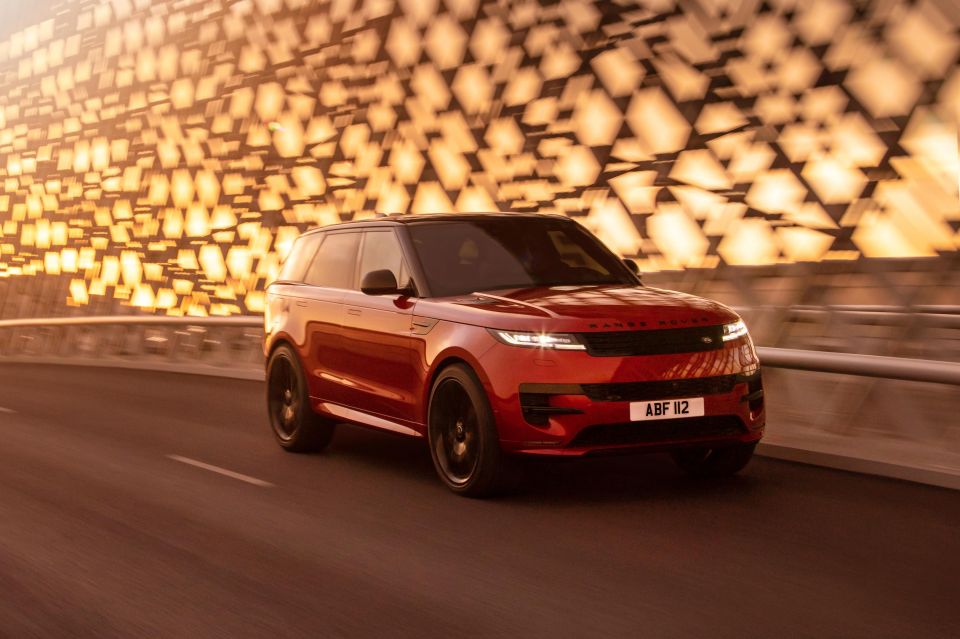
Where expert car reviews meet expert car buying – CarExpert gives you trusted advice, personalised service and real savings on your next new car.
In the real world that’s probably closer to 80km, but if you consider how many kilometres a day you actually do, it means that the absolute majority of the time you are driving an electric vehicle without the fear or running out of charge.
It had some interesting features, like detecting when it was entering Madrid CBD and switching to full-EV (a requirement in numerous European cities in the to avoid tax and reduce pollution). It had plenty of go on the electric drive alone but if you needed more, the petrol engine would wake up instantly to assist.
It’s a great mid-way between a full-blown EV and a petrol car, but at around $200,000, it’s about $30k on top of the equivalent P400, just to save fuel and impress your environmentally-conscious friends – and save the planet, of course…
As Range Rover likes to do, we also subjected our numerous test cars to an incredibly and unreasonably tough off-road course to showcase that even on 23-inch wheels with low-profile tyres, the Range Rover Sport is still capable of roving over the toughest terrain.
Without boring you about its capability, we can say without doubt it’s the most capable luxury SUV in its segment, features that the absolute majority of its owners will never ever use.
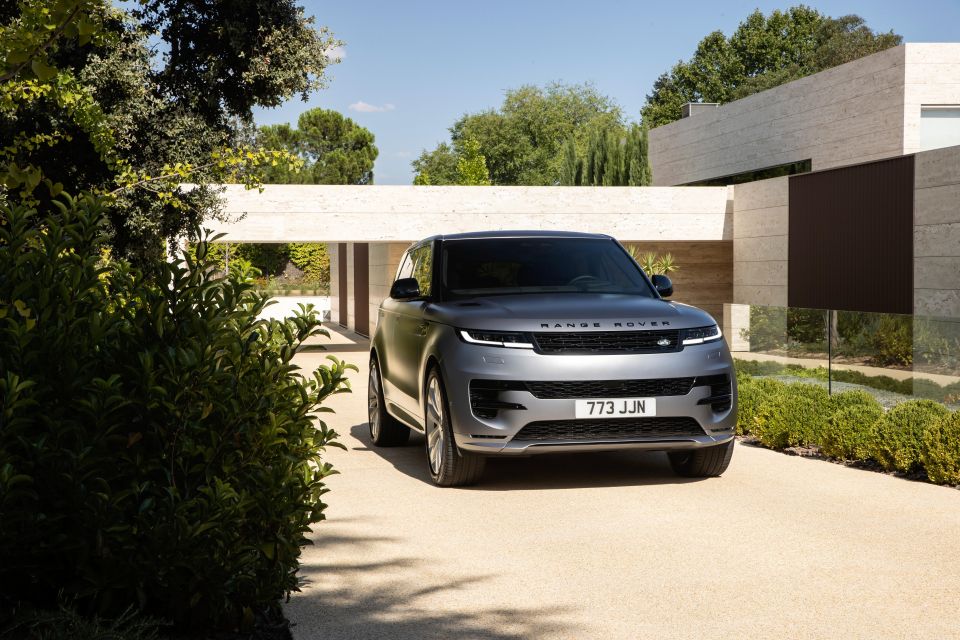
Range Rover Sport SE highlights:
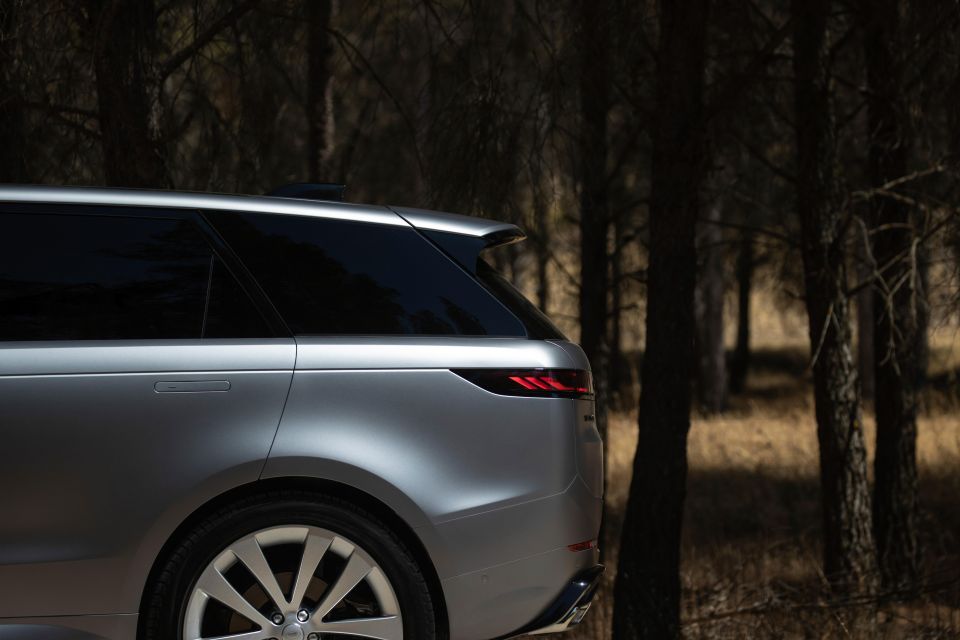
Range Rover Sport Dynamic SE adds:
Range Rover Sport Dynamic HSE adds:

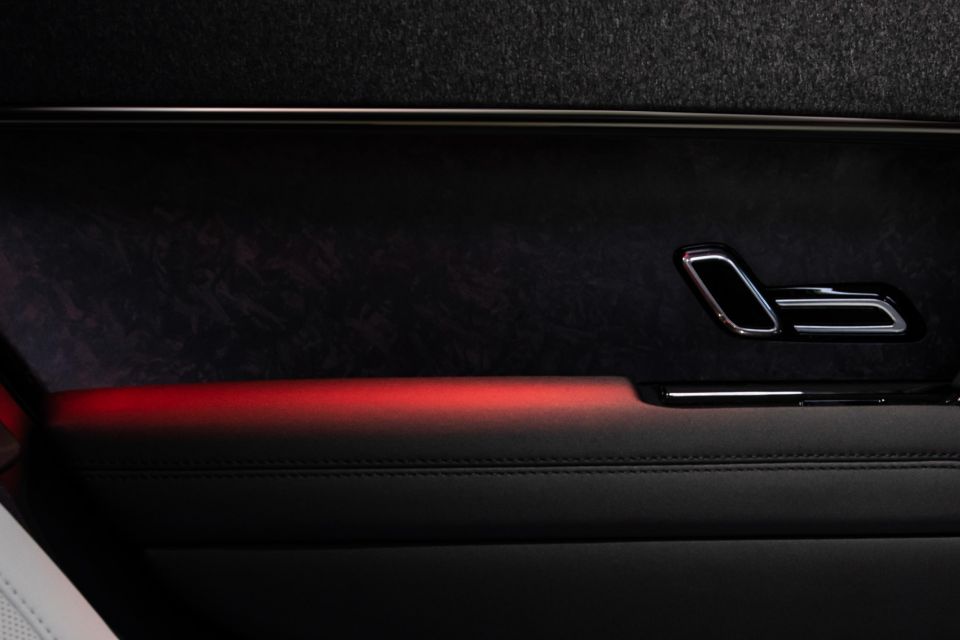
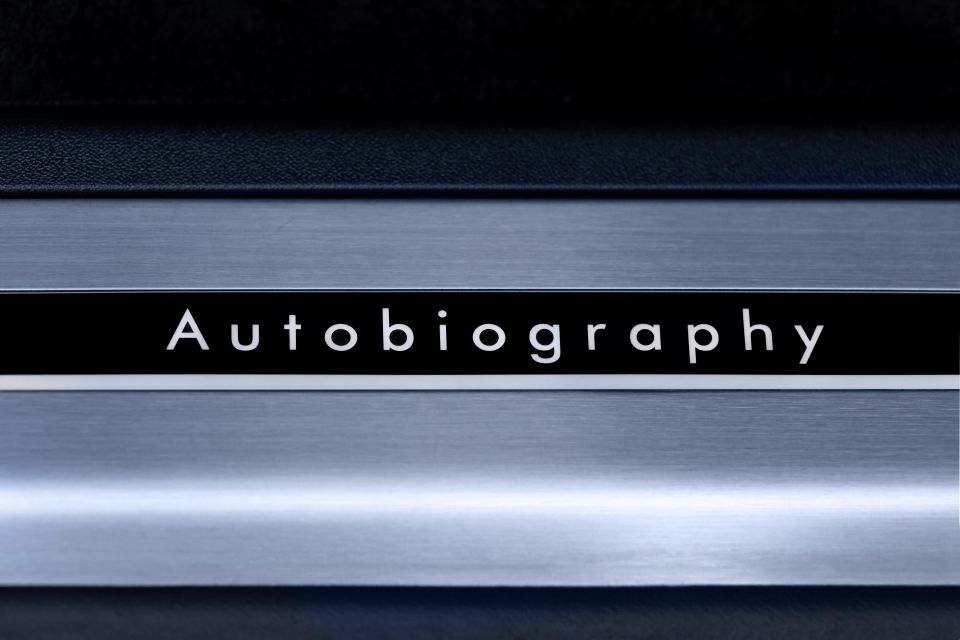
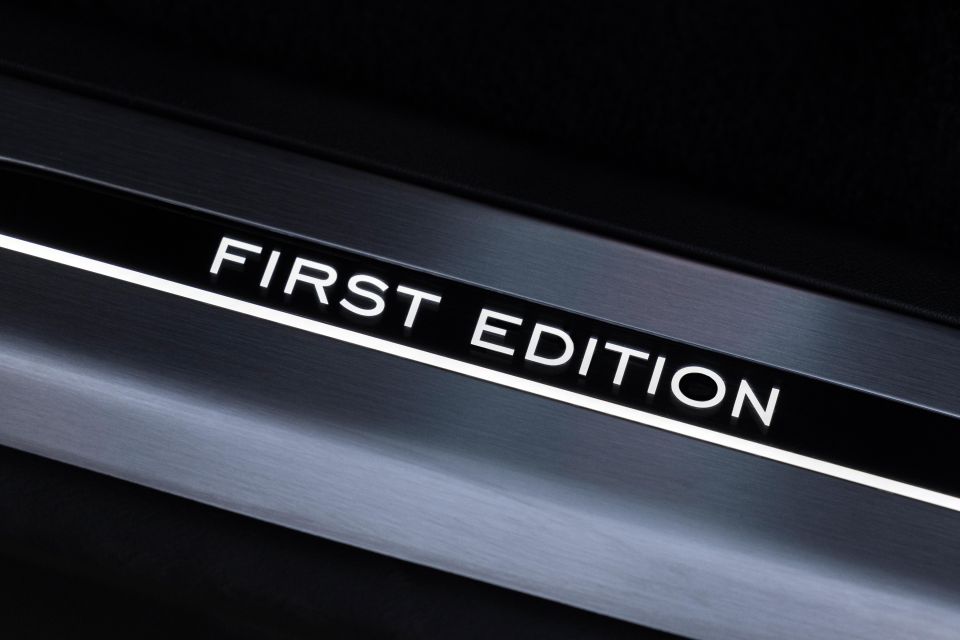
Range Rover Sport Autobiography adds:
Range Rover Sport First Edition adds:
MORE: 2023 Range Rover Sport price and specs


Cold Climate Pack, $1020
Hot Climate Pack, $2925-6693 depending on variant
Technology Pack, $2686 (SE, Dynamic SE)
Premium Textile Pack, $3726 on Dynamic SE and Dynamic HSE and $5385 on SE
Premium Upgrade Interior Pack, $3015 on Dynamic SE and Dynamic HSE and $4673 on SE
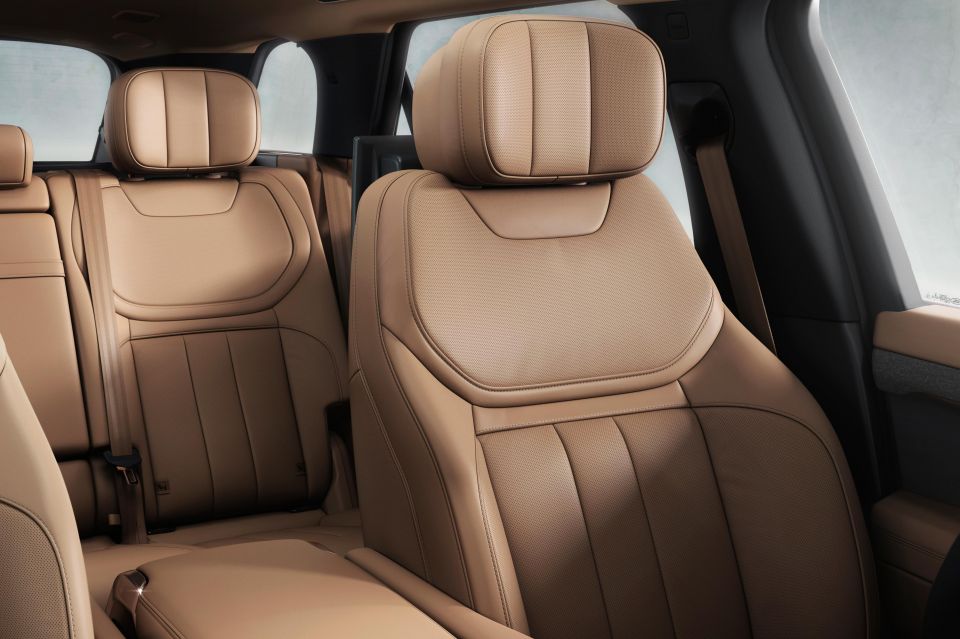
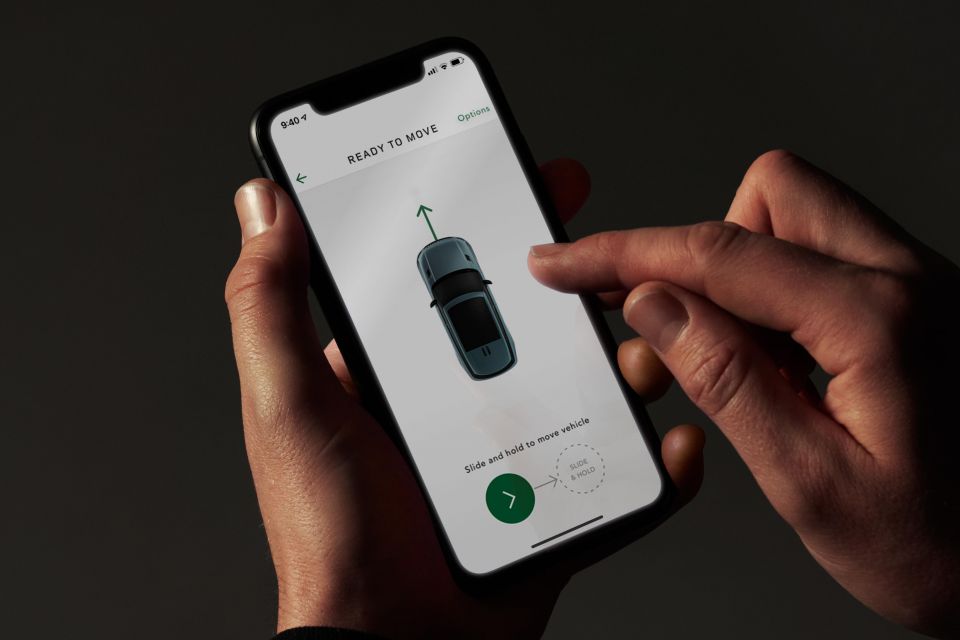
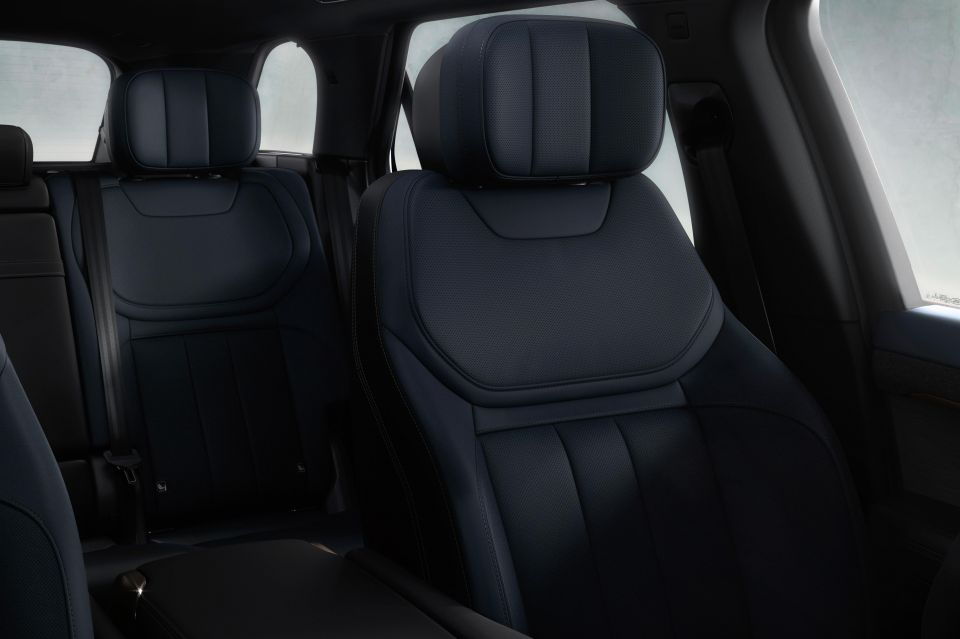
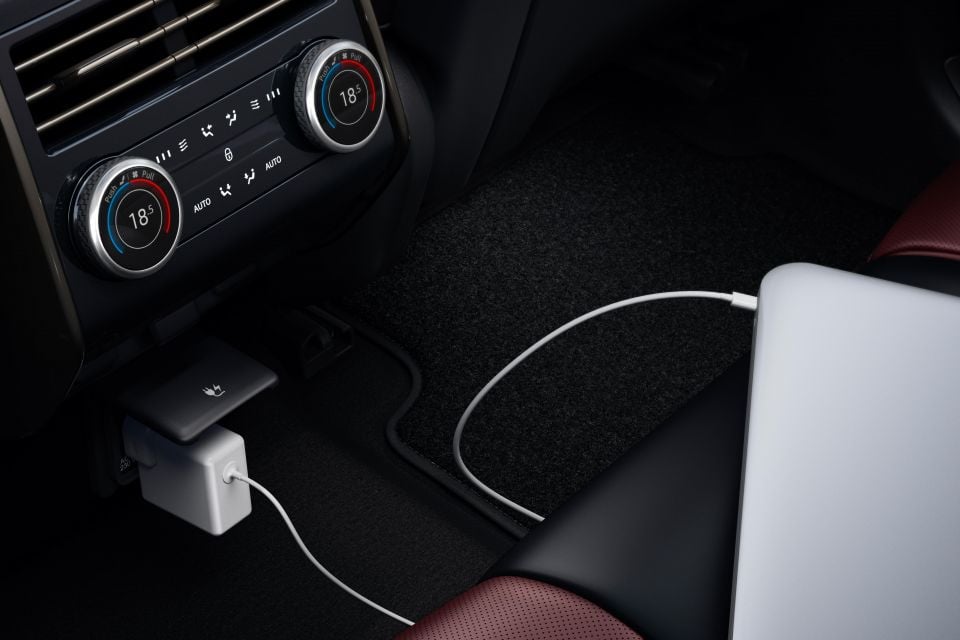
Standalone options include, but are not limited to:
Variant-specific options include:
There’s also a wide range of different wheel and trim options, including a choice of Windsor or semi-aniline leather upholstery and Ultrafabrics textiles.
We recommend checking out the Range Rover Sport configurator on the Land Rover website.

ANCAP and Euro NCAP have yet to test the new Range Rover Sport.
Standard safety equipment in Australia will include:

The Range Rover Sport is covered by a five-year unlimited kilometre warranty.
Service pricing is as follows:
| Engine Type | Engine Badge | 5-year Service Plan |
|---|---|---|
| 3.0 i6 183kW Diesel | D250 | $3200 |
| 3.0 i6 221kW Diesel | D300 | $3200 |
| 3.0 i6 258kW Diesel | D350 | $3200 |
| 3.0 i6 265kW Petrol | P360 | $2700 |
| 3.0 i6 294kW Petrol | P400 | $2700 |
| 4.4 V8 390kW Petrol | P530 | $3800 |
| 3.0 i6 294kW PHEV Petrol | PHEV | $2700 |

Ultimately, you will buy a Range Rover Sport because you want to – not because you need to.
It’s a brilliant package that is best suited to suburban life and long country drives.
If you’re coming out a Porsche Cayenne or a BMW X5 M, you may find the Sport’s dynamic capability a little lacking but frankly, this isn’t about going fast around corners.
The Range Rover Sport is about being super-relaxed and wrapped in luxury and for that reason alone, it’s the best luxury family SUV in its segment.
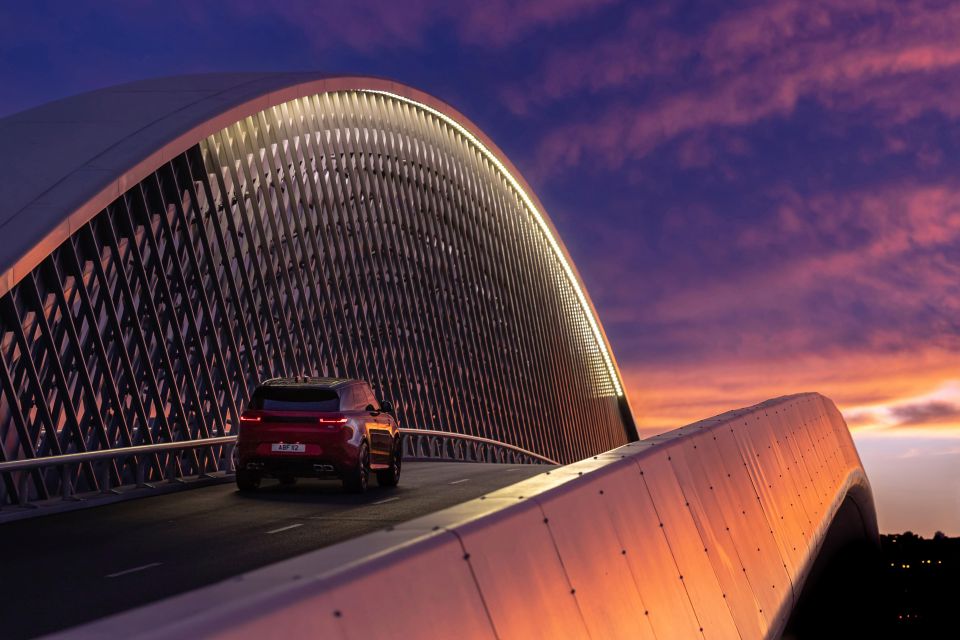
Click the images for the full gallery
Where expert car reviews meet expert car buying – CarExpert gives you trusted advice, personalised service and real savings on your next new car.
Alborz Fallah is a CarExpert co-founder and industry leader shaping digital automotive media with a unique mix of tech and car expertise.


Max Davies
49 Minutes Ago


William Stopford
17 Hours Ago


Ben Zachariah
18 Hours Ago


Derek Fung
18 Hours Ago


Matt Campbell
1 Day Ago


William Stopford
2 Days Ago